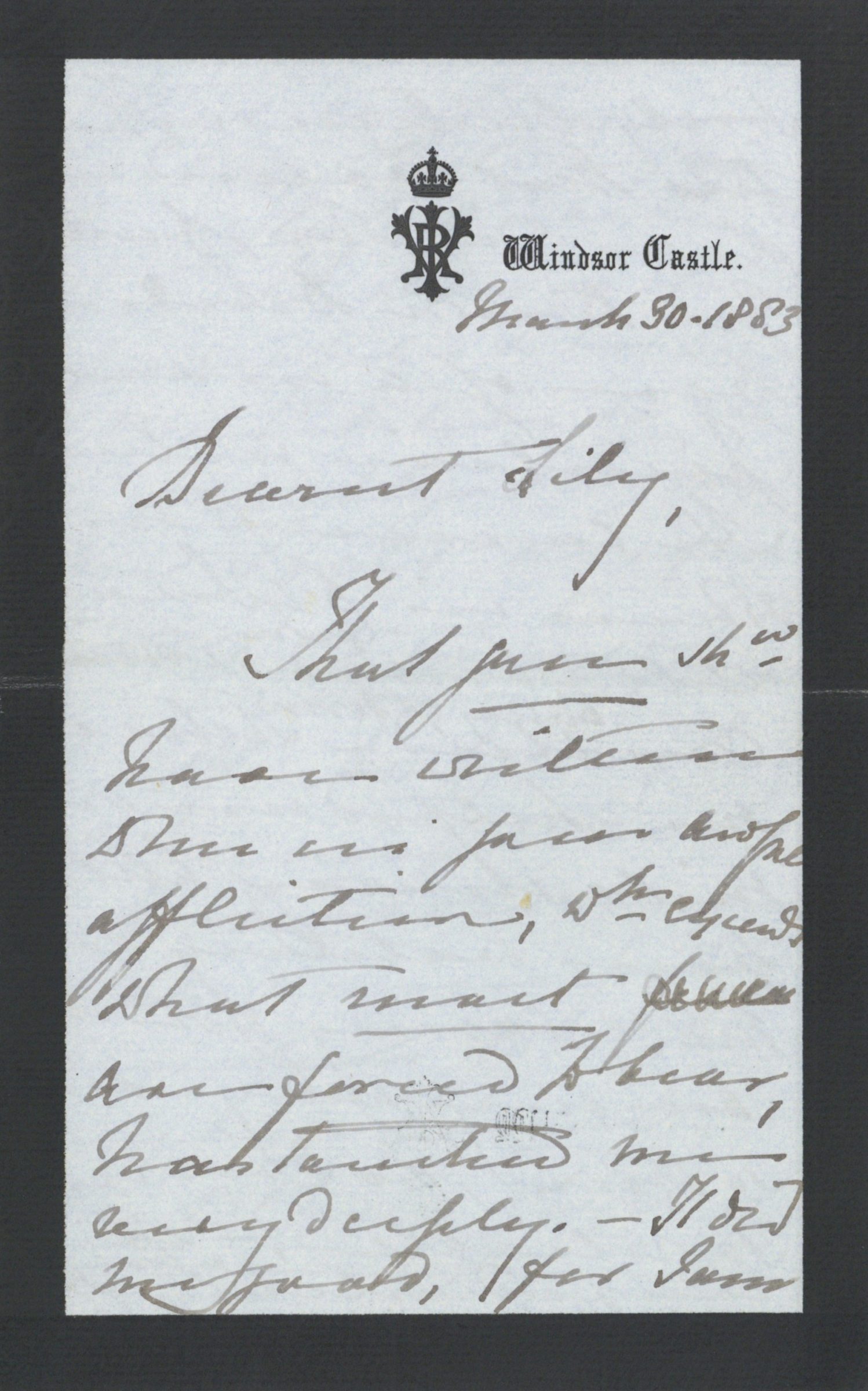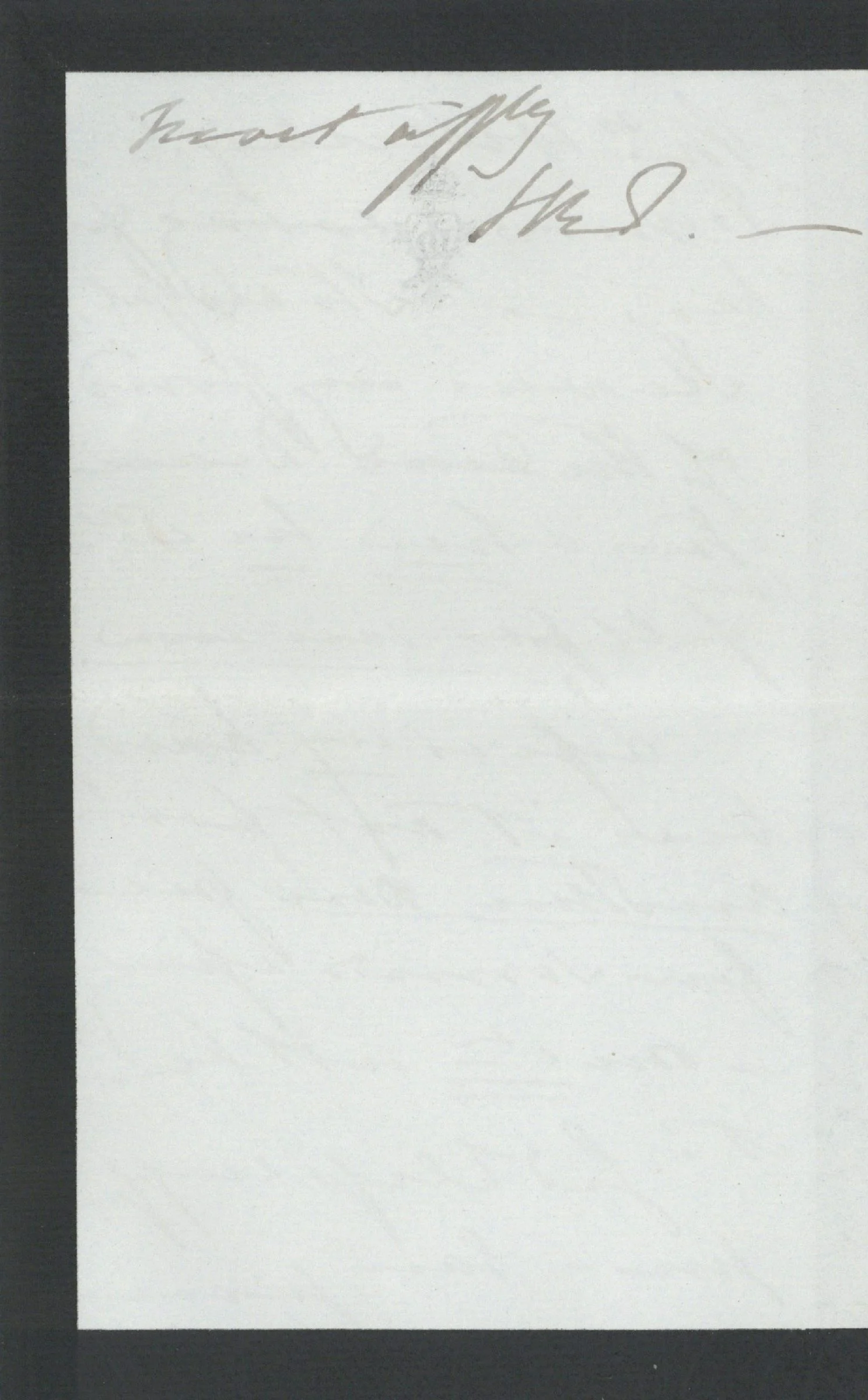Queen Victoria Eulogizes John Brown, Her Beloved Friend







“I am sorely stricken. The ties that bound my dear, devoted, faithful Brown to me - were of almost peculiar nature. He came to me when in 64 I was still bowed down & crushed by my sorrow - & he cheered me - helped me on in so many little ways - watching over me & caring for me in every way - so strong, so true, so discreet - so reliable, so confidential & so loving…”
“No ones loss could be heavier. And he was so strong & powerful – & his health & constitution so remarkably strong…It was all over in a moment like my dear Husband [Albert]. Life will again be sadly changed for me! I feel stranded!”
Clearly the most important letter of Victoria...
“No ones loss could be heavier. And he was so strong & powerful – & his health & constitution so remarkably strong…It was all over in a moment like my dear Husband [Albert]. Life will again be sadly changed for me! I feel stranded!”
Clearly the most important letter of Victoria on Brown we have ever seen, filled with her pain over the loss of Brown and her husband, Prince Albert
In 1848 the Balmoral Estate in Scotland was leased by Queen Victoria and Prince Albert, and it was purchased by them in 1852. The Queen first mentioned John Brown, a stable boy until hired by the Royal family, in her Journal on September 11, 1849, and from 1851 Brown, at Albert’s suggestion, took on the role of leading Queen Victoria’s pony. In 1858, Brown became the personal ghillie (shooting guide and gun-loader) of Albert. Brown was appreciated by many (including the Queen) for his competence and companionship, and resented by others (most notably her son and heir the future Edward VII, for his influence and informal manner.
After Prince Albert died in 1861, Victoria went into deep mourning, becoming almost a recluse. In 1864, her daughter, Princess Alice, noted that the Queen was always happy at Balmoral, especially when taking a ride in her pony cart. Why couldn’t pony cart rides be made available at Windsor and at Osborne (the Queen’s home on the Isle of Wight), with the Queen in the care of the man who so effectively led her pony at Balmoral? The Queen agreed and in December 1864, John Brown became a full-time servant. He was, as Victoria put it in her journal, “indefatigable in his attendance and care”.
By 1866 gossip about the relationship between the Queen and her extremely informal servant had started. Brown was the only person around Victoria prepared to “tell it like it was”, and he often proved abrasive with members of the Royal Household: even, it is said, on at least one occasion giving the Prince of Wales the rough edge of his tongue. Rumors of a relationship between Victoria and Brown soon spread more widely, and Brown was featured in the satirical magazine Punch on June 30, 1866, and Victoria came to be referred to by some members of her household (behind her back) as “Mrs Brown”. Meanwhile, a Swiss newspaper went as far as suggesting that the two had actually married. John Brown died at Windsor Castle on March 27, 1883, aged 56.
Were Queen Victoria and John Brown married? Quite possibly. After Victoria’s death, two sets of mementos were placed in her coffin, at her request. On one side was placed one of Albert’s dressing gowns, while on the other was placed a lock of Brown’s hair, along with a picture of him and a ring worn by Brown’s mother and given to Victoria by Brown. On his deathbed in 1872 the Rev. Dr Norman Macleod, the chaplain to the Queen, stated that he had conducted a marriage ceremony between her and Brown, and he repented of it. And the Daily Mail newspaper, on September 2, 2006, reported a similarly second-hand story in which a late senior member of the Royal Family had said that documents confirming a marriage had many years earlier turned up in the Royal archives at Windsor, and been destroyed. Moreover, a life-size statue of Brown at Balmoral, commissioned by Victoria after his death, was removed by her son.
Whether they were married, unmarried but in a physical relationship, or just very close friends, will never be known. But the question has intrigued historians and the public, and a movie, “Mrs. Brown”, was made on the subject starring Judy Dench as Victoria. But there is evidence of a real intimacy, a physical closeness (to whom else would a monarch lift her skirt)? But we do not really know what form this intimacy took; what was more significant was that she loved him deeply, and when he died she likened the loss of Brown to the loss of Albert.
Gerald Wellesley, nephew of the great Duke of Wellington, was appointed personal chaplain to the Queen in 1849, becoming Dean of Windsor in 1854. He married Madgalen ‘Lily’ Montagu, daughter of Lord Rokeby, in 1856. The couple were in constant contact with the royal family, and he was one of the Queen’s closest advisors. He died in 1882. The couple’s only child died in early 1883 at age 18. Thus, both Victoria and Lily had lost their husbands to early deaths, and Lily had lost a son.
Autograph letter signed, on Windsor Castle letterhead, six pages, March 30 1883, to Lily Wellesley, expressing anguish over the death of Brown just three days earlier, mentioning the loss or Albert, and offering condolences on Lily’s son’s death. “Dearest Lily, That you should have written to me in your awful affliction, which exceeds what most are forced to bear, has touched me very deeply. – It did me good, for I am sorely stricken. The ties that bound my dear, devoted, faithful Brown to me – were of almost peculiar nature. He came to me when in 64 I was still bowed down & crushed by my sorrow – & he cheered me – helped me on in so many little ways – watching over me & caring for me in every way – so strong, so true, so discreet – so reliable, so confidential & so loving so that excepting my darling Beatrice, no ones loss could be heavier. And he was so strong & powerful – & his health & constitution so remarkably strong that I felt as sure as one can be of anything human that he would- long, very long be preserved to me! He had overcome that queer frightful illness in 79 at Baverno – & so well – that I was full of hope – till ½ an hour before all was over Sir Wm. Jenner was hopeful – It was all over in a moment like my dear Husband. Life will again be sadly changed for me! I feel stranded! But what is this compared to your loss – your loneliness, when the dreadful news arrived of your darling boy’s loss – my dear Brown showed much feeling & said: “Poor Mrs. Wellesley! I’m so sorry for her. – Its awful.” He was very fond of the dear Dean too – & how he would have felt for me now! Life is very hard, & were it not for another one free from sorrows & parting – one could not bear it. God bless & support you – Ever yours most affectionately, VRI.”
This is the most evocative letter of Victoria we have carried in all these decades, a treasure trove of her emotions and attitudes.

Frame, Display, Preserve
Each frame is custom constructed, using only proper museum archival materials. This includes:The finest frames, tailored to match the document you have chosen. These can period style, antiqued, gilded, wood, etc. Fabric mats, including silk and satin, as well as museum mat board with hand painted bevels. Attachment of the document to the matting to ensure its protection. This "hinging" is done according to archival standards. Protective "glass," or Tru Vue Optium Acrylic glazing, which is shatter resistant, 99% UV protective, and anti-reflective. You benefit from our decades of experience in designing and creating beautiful, compelling, and protective framed historical documents.
Learn more about our Framing Services














































































































